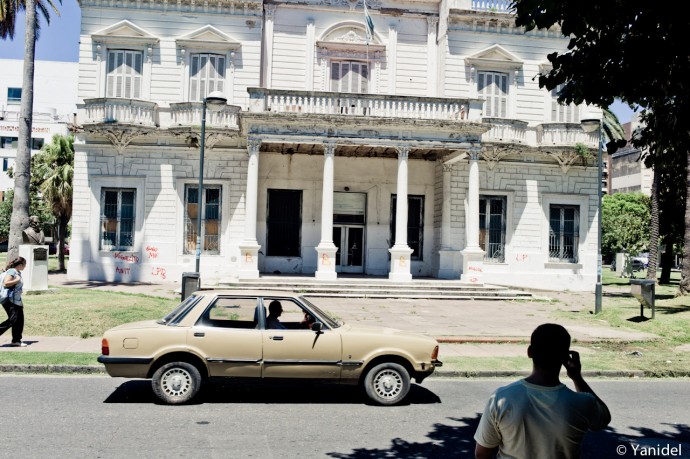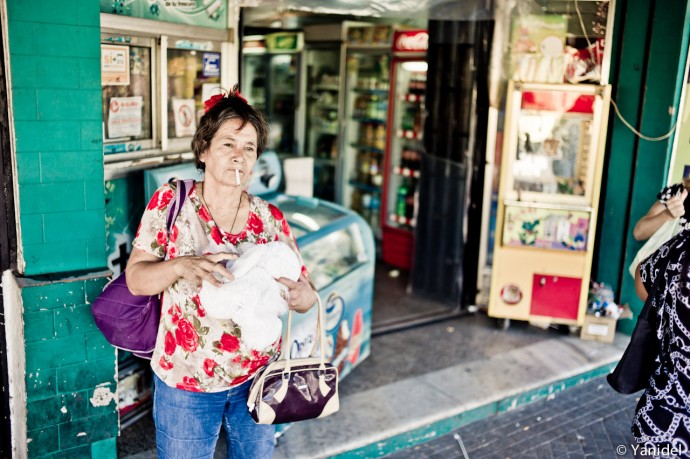A few days ago, I read a very interesting article by fellow street photographer Eric Kim about “6 reasons why shooting film will make you a better street photographer”. It immediately made me reflect on why I actually used digital. I therefore contacted Eric to know if he minded that I wrote a similar article, yet on the reasons why I thought digital would make you a better street photographer. He gladly accepted as a way to share point of views and I thank him for that. Be it his reasons or mine, there will valid points in both opinions, the ultimate goal being to let you decide by yourself which of film or digital suits better your needs and personality. So please find below my 5 reasons why digital will make you a better street photographer. Note that I have left out some more obvious ones (ISO, convenience, flexibility,… ) trying to point out these more inherent to the photographer’s behavior than those related to technique.
1) Street photography is instinctive.
Film is expensive. Unless you are a millionaire, there is so much shots you will be able to afford on a given day. Your shot selection will therefore depend on how much you got left before the end of your day. It will be there in your mind whenever you take a shot “Is it worth it?”. Not good to me, street photography is instinctive. It is fast and there is no room for doubts, follow your instincts and click whenever what you see (and not what you have left) seems worth a click. Indeed it is a risk vs reward discipline. If you restring yourself from risk, there will be less rewards too.
Leica M9 with 35mm Summilux Asph at F1.4, 1/4000, ISO200, 0.6 ND filter
2) Shot selection comes with experience, not force.
During my first street photography outings, I would come back home with about 150 to 200 shots. Of these, I would probably keep half, most of them crappy. Nowadays, a full day of shooting in the streets will have me come back with around 50 pictures. I have learnt which shots not to take, I have developed specific interests, I master my camera better and I believe I found what my style is. This comes with time, trial and also many failures. It won’t come by a self-imposed shot restriction, indeed, the only way to analyze a shot is to take it. You can then determine afterwards the reasons of failure or success.
 Leica M9 with 35mm Summilux Asph at F1.4, 1/2000, ISO200, ND 0.6 filter
Leica M9 with 35mm Summilux Asph at F1.4, 1/2000, ISO200, ND 0.6 filter
3) You mind is not your camera.
I think we all pre-visualize shots, meaning we see a scene and imagine how it would look as a picture. The problem with that it that we see it in three dimensions, while a picture has only two. So don’t be surprised if the output does not have the feel of what you originally saw. Also, our eyes do not have a horizon line problem, it self-regulates. Same apply with out of focus areas, it is very difficult to imagine how they could look like on a given shot. So in doubt, you can have a quick check on your LCD whether your vision translated correctly, and therefore correct your misinterpretations on the spot. I believe it is a great advantage of digital to be able to be confronted straight away with incorrect visualizations. It gives you that second chance that you do not have with film.
Leica M9 with 35mm Summilux Asph at F5.6, 1/750, ISO200
4) It’s not about the camera, it’s all about you.
Shooting a film camera won’t make you get closer, nor stealthier, nor less obtrusive. It is all about you. Overcoming shyness and learning to interact with your subjects is not easy and takes time and practice. Few people are natural social animals, so getting to know how to interact with strangers is a skill that must be exercised. I remember my days in Paris when I would go down to Les Champs-Elysées Avenue for a couple of hours and just shoot strangers as an exercise. I took dozens of shots without the worry of wasting them (nor either with the aim to make great shots). Digital gives you that flexibility to practice as much as you want. It accelerates your learning curve both technically and socially.
Leica M9 with 35mm Summilux Asph at F1.4, 1/1000, ISO200
5) Express your creativity.
In the film days, unless you were willing to spend endless hours in a lab, you did not master the final output of your shots. Film was pre-selected so there was little latitude on what you could done after the shot, especially color wise. Nowadays, software will allow you to basically do anything your creativity will come up with. No more need of years to spend before one masters a chemical lab. Nowadays it is a only a question of months and decent computer skills. And by doing so, don’t feel like your are doing something wrong, isn’t black & white the ultimate stage of the desaturation slider ? Let your creativity fully express itself. Coming up with a unique style is a differentiator. Possibilities are endless nowadays and your street photography might be defined as much by the aesthetics then the content itself.
Leica M9 with 35mm Summilux Asph at F1.4, 1/750, ISO200
So again, have a look at Eric’s article (and his great street photography website) and make yourself your own opinion. Your conclusion might fall in between both, and in the end, nothing prevents you from using both film and digital, right ?



